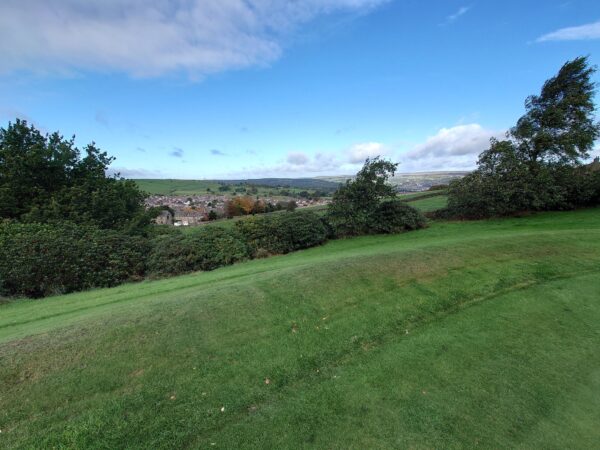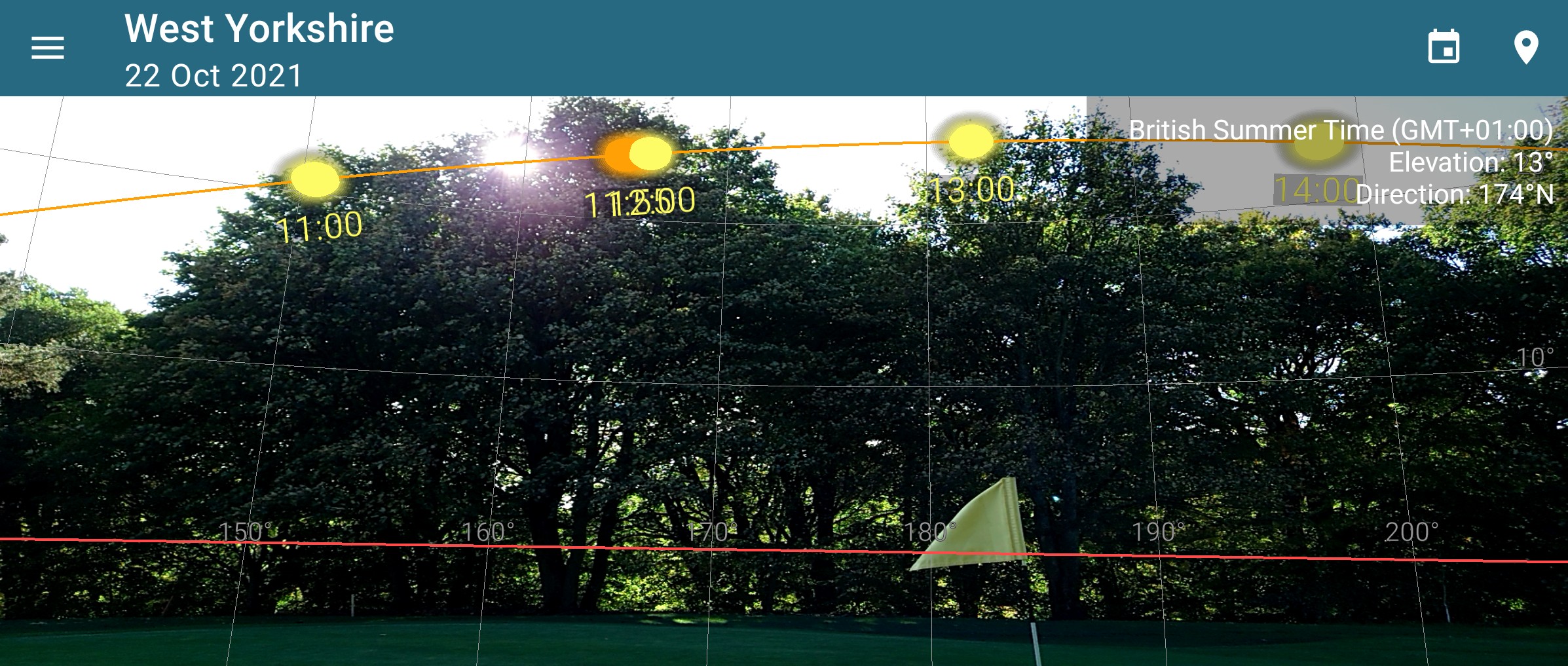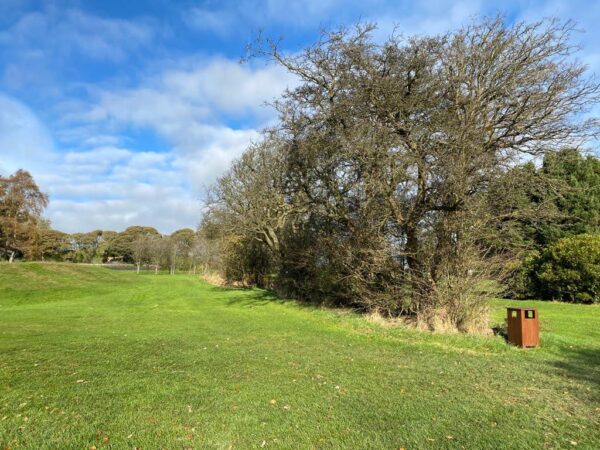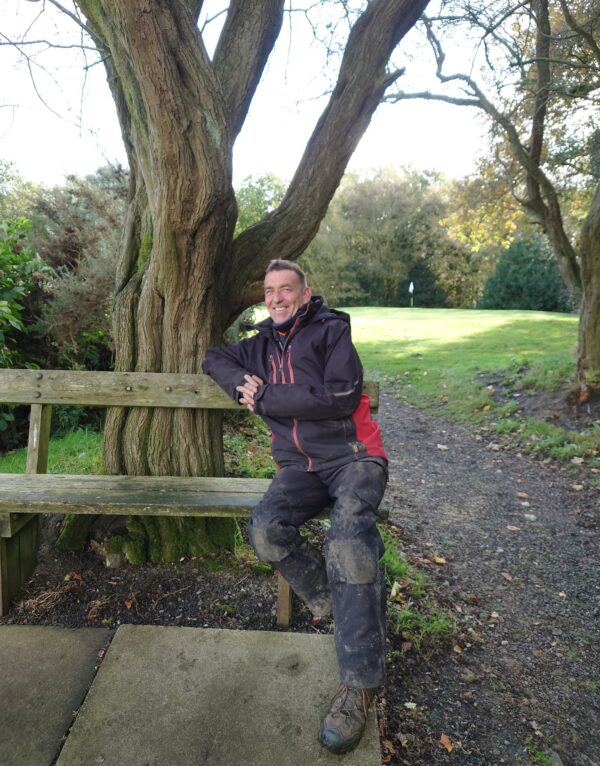A Visit from BIGGA
Ecology Expert James Hutchinson Walked the Golf Course with Nigel Graham in Late October
West Bradford had a visit from James Hutchinson, BIGGA's (British & International Golf Greenkeeper's Association) Ecology and Sustainability expert, towards the end of October. James walked the course with Head Greenkeeper Nigel Graham, chatted with him about West Bradford's future plans for the golf course, and gave his advice on certain areas of the course.
Following the visit, BIGGA produced a short report for West Bradford Golf Club - covering both James's advice to Nigel on both the extension of the pond on 17 and the proposed new pond on 14, as well as his advice on other aspects of the golf course.
Here are some excerpts from the report that may interest West Bradford members:-
Rhododendron's on The Course
There are Rhododendron (Ponticum) and Ash trees to the rear of the 4th green which require removal; rhododendron carries a free phenol which can be released when it rains. The phenol is absorbed by the underlying soil and neutralises it to a point where almost nothing else can live there, other than another rhododendron.
That being said, remove the rhododendrons from here.
The Ash Trees have been infected with the Chalara virus (ash dieback) therefore should also be removed and burned onsite. Another good reason for the removal of the trees however, is the fact that you will eventually lose the beautiful views on offer if these are allowed to grow.

The partially obscured view of the Aire Valley, behind the 4th green
The rhododendrons onsite should be removed in their entirety sooner rather than later as they are an environmental disaster! Knowing this, remove all the rhodies from the course and replace with a more suitable type such as dogwood, spindle and/ or gorse.
Native Plants and Heather
I feel it is an idea to begin a programme of heather reinstatement across the site. You have many areas where heather will grow such as beneath the pines on the third – I noted moor-mat grass growing here and this has a relationship with heather I.e. they both grow in acidic conditions (pH of around 4.5).
That being said, I suggest you locate two things:
1. Native Yorkshire heather plants
2. Native Yorkshire heather seed
Once you have these, plant approximately 10 small heather plants beneath the pines, but as out of play as possible. If you can locate heather seed, then simply deeply scarify the chosen area and then solid or hollow tine in the seeds. These should take the following year. Avoid purchasing heather turf as this rarely takes.
Tree's to Right of the 9th
Another issue is the right hand side of the ninth green. The trees are now at a height where management is required I.e. total removal on the course’s side/ property. I have added a photo of the sun’s position in October – the lack of sunlight and air flow to the green are having an impact on grass growth, disease pressure and potential frost coverage.
Remove the sycamore trees and replace with a more suitable native type such as rowan, birch and hawthorn.

The "Sun Path" tool shows the lack of direct sunlight reaching the 9th green due to the trees on the right hand side
Ancient Hawthorn Trees
The course has many old hawthorns of a significant age (over 100 years). I have a feeling that, given their girth size, decay and general 'gnarlyness' these probably pre-date the golf course. Most are planted in straight lines suggesting old field or parish boundaries – whichever it is, they should be retained at all costs.
Remove the sycamore trees and replace with a more suitable native type such as rowan, birch and hawthorn.

The line of Ancient Hawthorn Trees behind the 6th green

Head Greenkeeper Nigel Graham sits in front of one of West Bradford's ancient Hawthorn Trees
The Proposed New Ponds and Extension of the Current Pond
In terms of the ponds, it is a good idea to develop a new one in front of the 14th green given the fact it sits wet for the most part. Nigel is more than capable of developing this in-house, and a pond is a good idea here because:
1. Ecology – newts and other amphibians will be attracted to it. Birds and anything else with fur/ hair can bathe or drink from the water.
2. Aesthetics – the existing bunkers could be described as basic. I have seen many sleeper, riveted or eco bunker faced traps and all would be suitable here, however, all would require ongoing maintenance, not to mention potential health and safety issues. Therefore a self-maintaining aquatic area would be more desirable.
3. Golf – a more thought provoking choice of hazards.
The pond on the 17th could definitely be extended out towards the fairway a little more thus creating a better hole for golf rather than the slightly bland one you have now. Again, Nigel is more than capable of both designing and carrying out this project to a high standard.
The potential total removal of the scots pine to the left of the fairway gives me cause for concern, however, if we mitigate this by planting 5 more nearby then this is acceptable.
